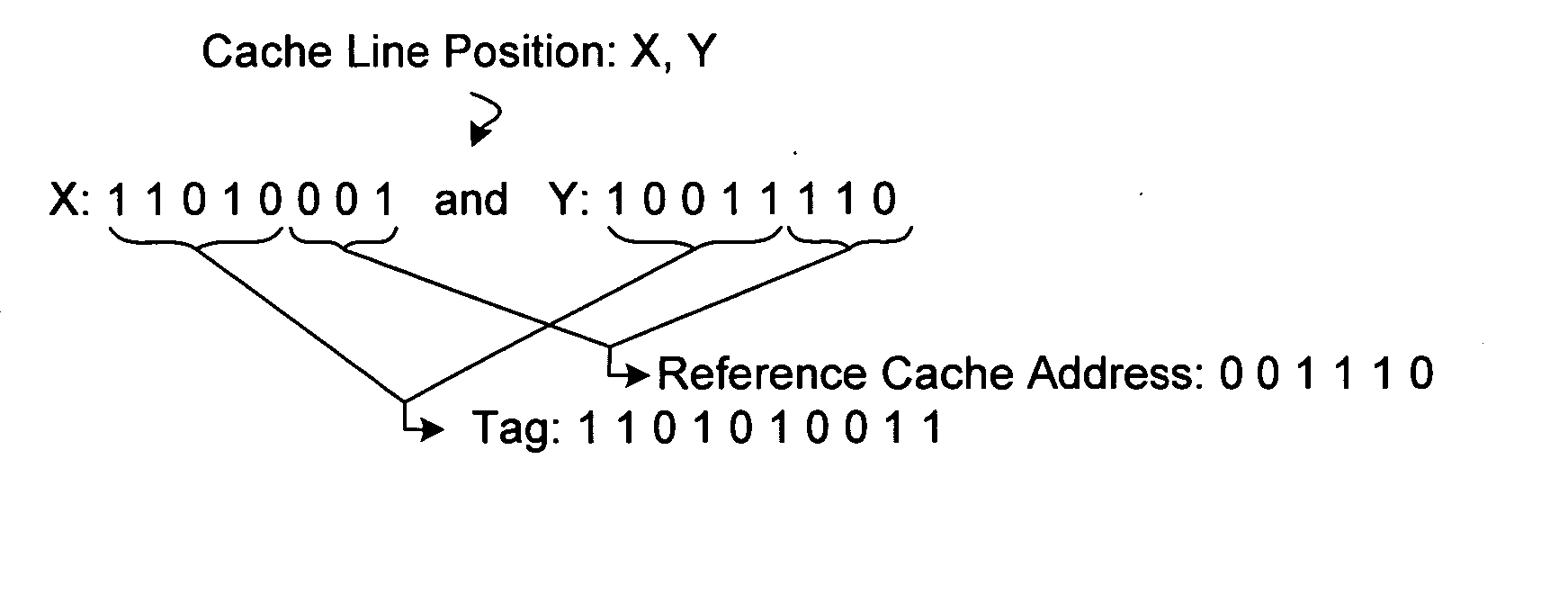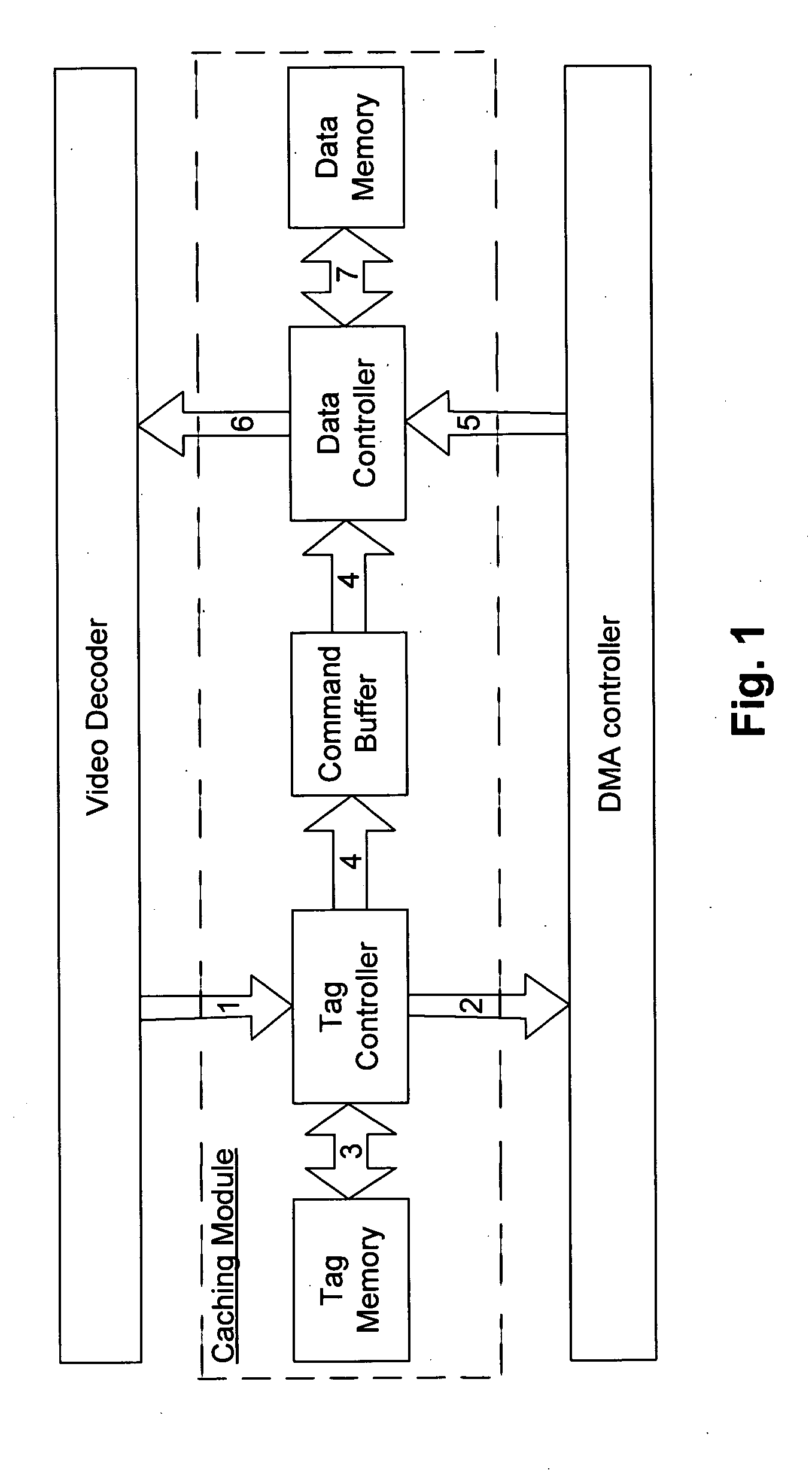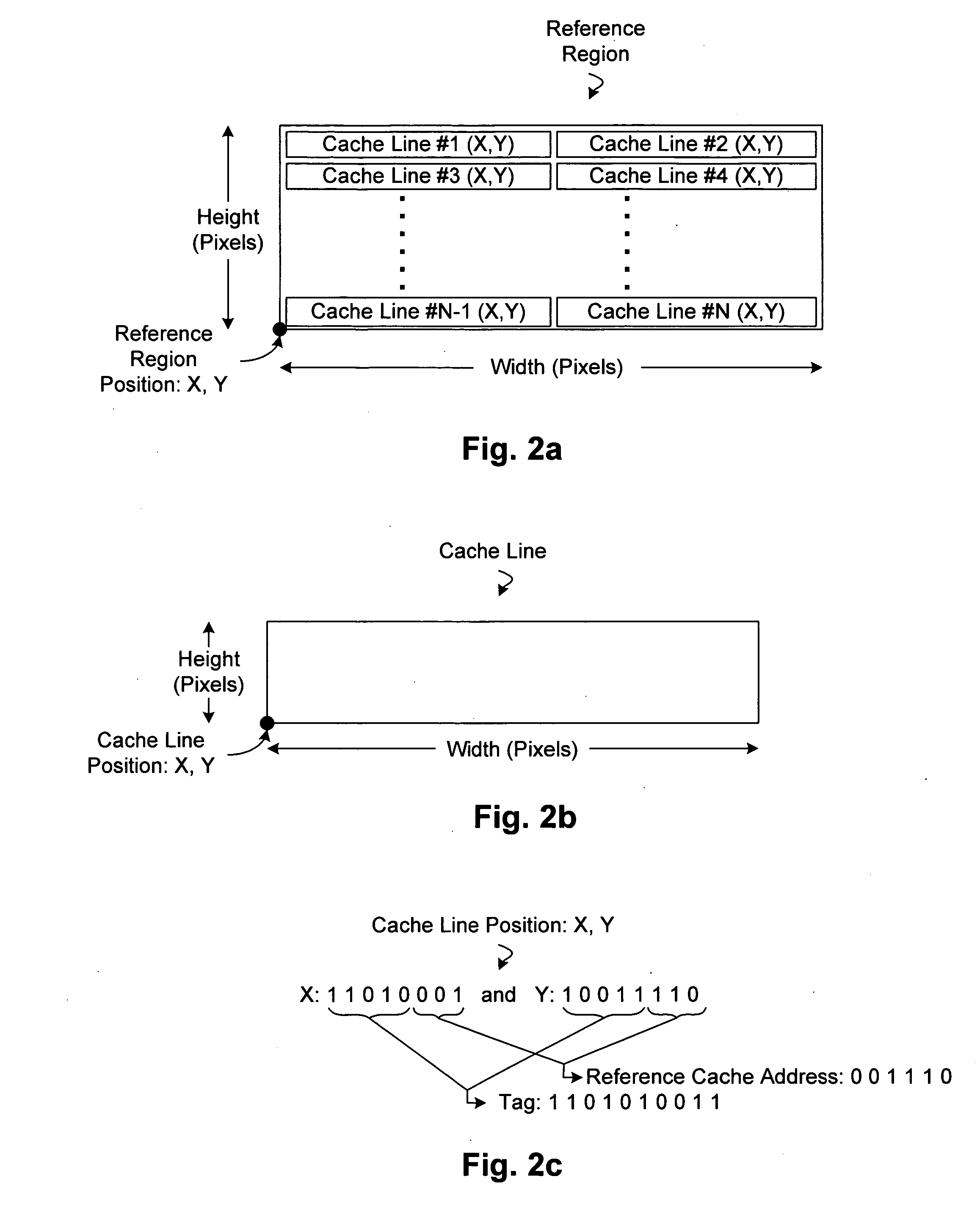Reference picture loading cache for motion prediction
a motion prediction and reference picture technology, applied in the field of video decoding, can solve the problems of degrading the video image, reducing the data to be transmitted, and generally a lossy process
- Summary
- Abstract
- Description
- Claims
- Application Information
AI Technical Summary
Benefits of technology
Problems solved by technology
Method used
Image
Examples
Embodiment Construction
[0016] Techniques for reducing memory traffic associated with reference frame buffering and accessing during motion prediction processing are disclosed. The techniques can be used in decoding any one of a number of video compression formats, such as MPEG1 / 2 / 4, H.263, H.264, Microsoft WMV9, and Sony Digital Video. The techniques can be implemented, for example, as a system-on-chip (SOC) for a video / audio decoder for use in high definition television broadcasting (HDTV) applications, or other such applications. Note that such a decoder system / chip can be further configured to perform other video functions and decoding processes as well, such as DEQ, IDCT, and / or VLD.
[0017] General Overview
[0018] Video coders use motion prediction, where a reference frame is used to predict a current frame. As previously explained, most video compression standards require reference frame buffering and accessing. Given the randomized memory accesses to store and access reference frames, there are a lo...
PUM
 Login to View More
Login to View More Abstract
Description
Claims
Application Information
 Login to View More
Login to View More - R&D
- Intellectual Property
- Life Sciences
- Materials
- Tech Scout
- Unparalleled Data Quality
- Higher Quality Content
- 60% Fewer Hallucinations
Browse by: Latest US Patents, China's latest patents, Technical Efficacy Thesaurus, Application Domain, Technology Topic, Popular Technical Reports.
© 2025 PatSnap. All rights reserved.Legal|Privacy policy|Modern Slavery Act Transparency Statement|Sitemap|About US| Contact US: help@patsnap.com



